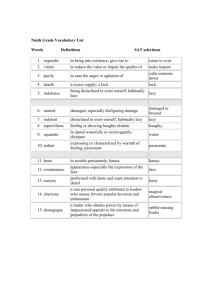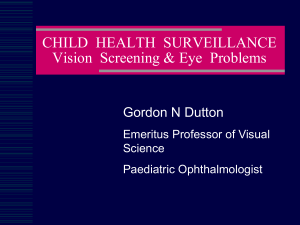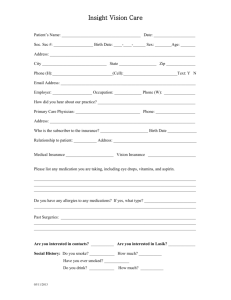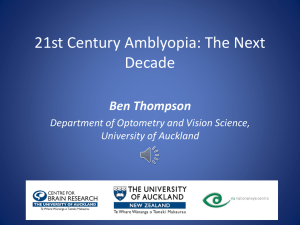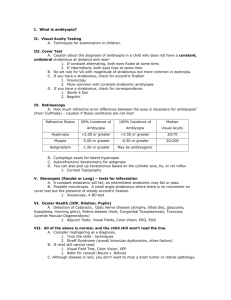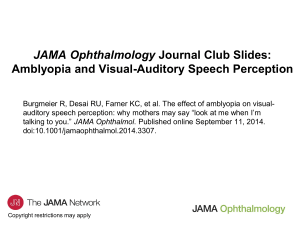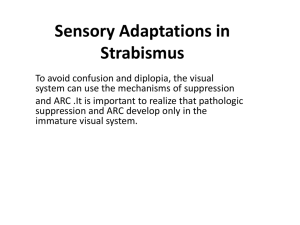'Lazy eye' may bully the brain into altering its wiring
advertisement
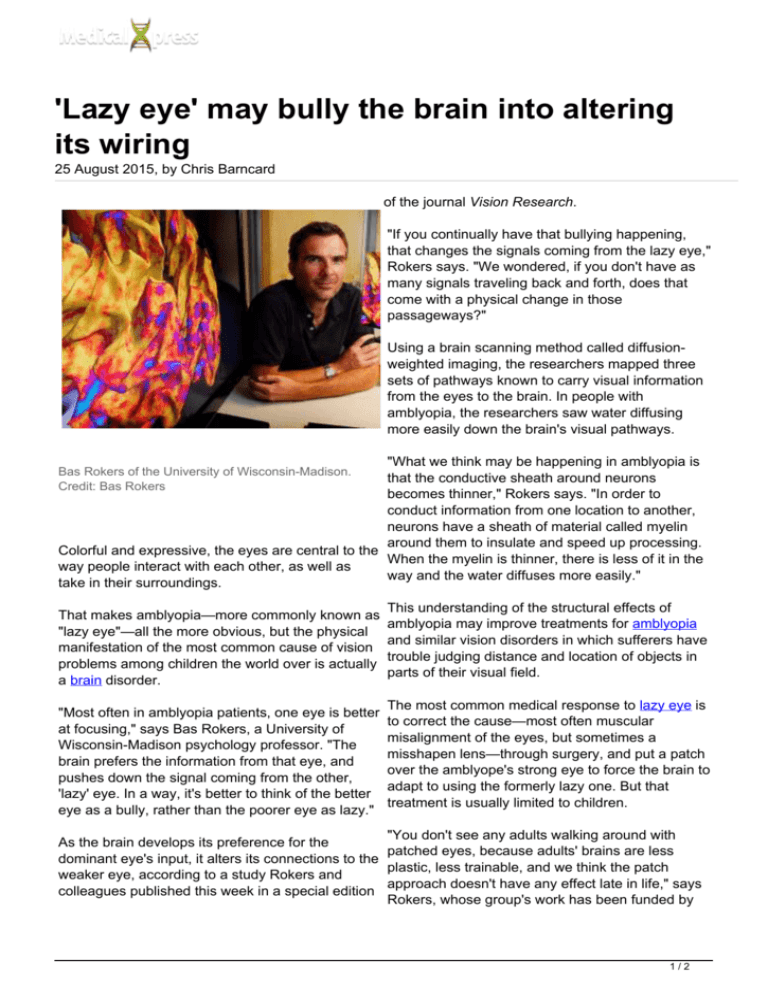
'Lazy eye' may bully the brain into altering its wiring 25 August 2015, by Chris Barncard of the journal Vision Research. "If you continually have that bullying happening, that changes the signals coming from the lazy eye," Rokers says. "We wondered, if you don't have as many signals traveling back and forth, does that come with a physical change in those passageways?" Using a brain scanning method called diffusionweighted imaging, the researchers mapped three sets of pathways known to carry visual information from the eyes to the brain. In people with amblyopia, the researchers saw water diffusing more easily down the brain's visual pathways. "What we think may be happening in amblyopia is that the conductive sheath around neurons becomes thinner," Rokers says. "In order to conduct information from one location to another, neurons have a sheath of material called myelin around them to insulate and speed up processing. Colorful and expressive, the eyes are central to the When the myelin is thinner, there is less of it in the way people interact with each other, as well as way and the water diffuses more easily." take in their surroundings. Bas Rokers of the University of Wisconsin-Madison. Credit: Bas Rokers That makes amblyopia—more commonly known as "lazy eye"—all the more obvious, but the physical manifestation of the most common cause of vision problems among children the world over is actually a brain disorder. "Most often in amblyopia patients, one eye is better at focusing," says Bas Rokers, a University of Wisconsin-Madison psychology professor. "The brain prefers the information from that eye, and pushes down the signal coming from the other, 'lazy' eye. In a way, it's better to think of the better eye as a bully, rather than the poorer eye as lazy." This understanding of the structural effects of amblyopia may improve treatments for amblyopia and similar vision disorders in which sufferers have trouble judging distance and location of objects in parts of their visual field. The most common medical response to lazy eye is to correct the cause—most often muscular misalignment of the eyes, but sometimes a misshapen lens—through surgery, and put a patch over the amblyope's strong eye to force the brain to adapt to using the formerly lazy one. But that treatment is usually limited to children. "You don't see any adults walking around with As the brain develops its preference for the patched eyes, because adults' brains are less dominant eye's input, it alters its connections to the plastic, less trainable, and we think the patch weaker eye, according to a study Rokers and approach doesn't have any effect late in life," says colleagues published this week in a special edition Rokers, whose group's work has been funded by 1/2 the Wisconsin Alumni Research Foundation and the Netherlands Organization for Scientific Research. "But that belief is changing, and this diffusionweighted imaging approach will help us understand whether, and how much, brain training treatments work." It will also aid in the development of new treatments—like some Rokers and ophthalmologists are developing using video games and virtual reality headsets. "You can put patients in the scanner and see if your treatment actually has an effect," Rokers says. "We haven't tried many different kinds of treatments, but with a way like this to assess success, you can reward experimentation." Provided by University of Wisconsin-Madison APA citation: 'Lazy eye' may bully the brain into altering its wiring (2015, August 25) retrieved 6 March 2016 from http://medicalxpress.com/news/2015-08-lazy-eye-bully-brain-wiring.html This document is subject to copyright. Apart from any fair dealing for the purpose of private study or research, no part may be reproduced without the written permission. The content is provided for information purposes only. 2/2 Powered by TCPDF (www.tcpdf.org)

